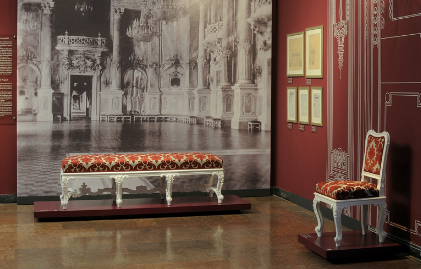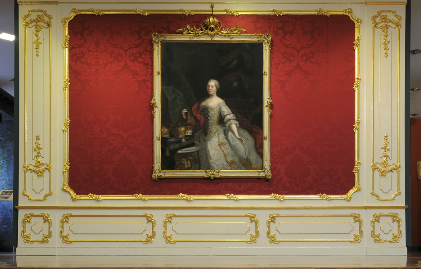Palace History Of Buda
PERMAMENT
A new permanent exhibition was opened in November 2013 at the Budapest History Museum titled The Royal Palace – Castle of Culture
| Tihanyi Bence - Bakos Ágnes |
2013-12-24 11:18 |

The gripping history of the Buda Castle Palace is presented in the exhibition of the Budapest History Museum, inviting the visitors to take an exciting time travel. The exposition covers an almost 300–year–long period, starting with the recapture of the Castle from the Turks in 1686, ending with the 1960s, flashing glimpses of the grandeur and glimmer of the former life in the Palace
The preserved pieces of the former furniture, the authentic wall-paneling reconstruction, the paintings, the architectural designs and wonderful works of applied arts invoke the past centuries. Portraits of those Kings and Queens, who had important roles in the making of the story of the palace are displayed, such as Maria Theresa or Franz Joseph. Besides the beautiful works-of-art a 3D animation presents the phases of the construction of the palace; the visitors can even take a virtual walk in those halls of the palace that were demolished during the past centuries.
 Two exquisite wall-reconstructions are also displayed. One of them is a wall piece with white gold paint and silk damask covering from the era of Maria Theresa, which is the copy of the original one, preserved in the Hofburg in Vienna. The other one is the reconstruction of the neo renaissance oak wood paneling of the Hunyadi Hall.
Two exquisite wall-reconstructions are also displayed. One of them is a wall piece with white gold paint and silk damask covering from the era of Maria Theresa, which is the copy of the original one, preserved in the Hofburg in Vienna. The other one is the reconstruction of the neo renaissance oak wood paneling of the Hunyadi Hall.
The exhibition reveals several objects, images and stories connected to them that were not known before. Designs showing the facades around 1770 can be seen along with a unique ground plan from 1778.
By following the story of the palace he visitors can learn all the important phases of the constructions and modifications from the core of the building built in Baroque style, through the work of expansion under Maria Theresa. The exhibition tells us how the palace became the home of the palatines and even Franz Joseph and finally, after World War II., how it became the palace of culture, home of several museums and of the Széchényi National Library